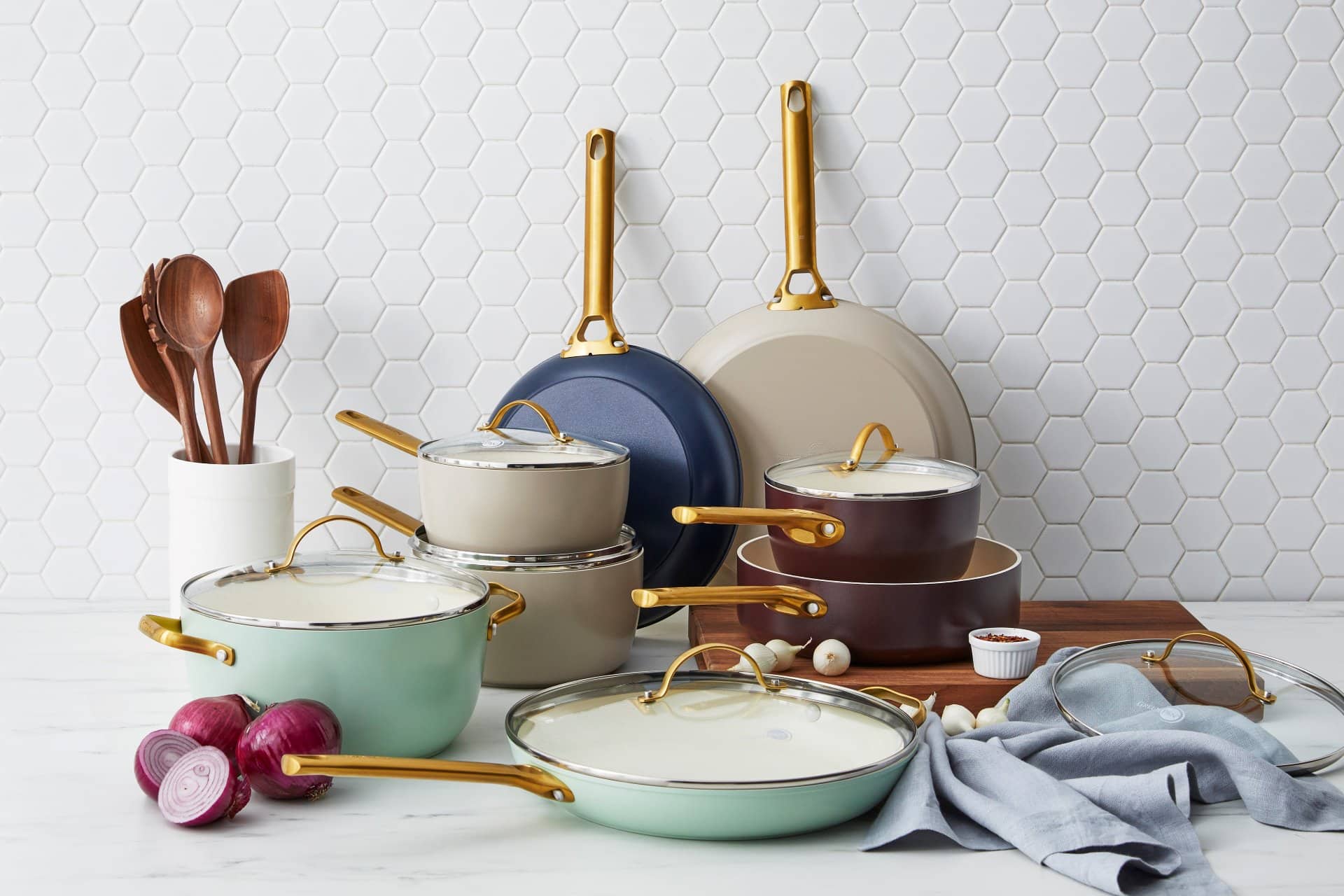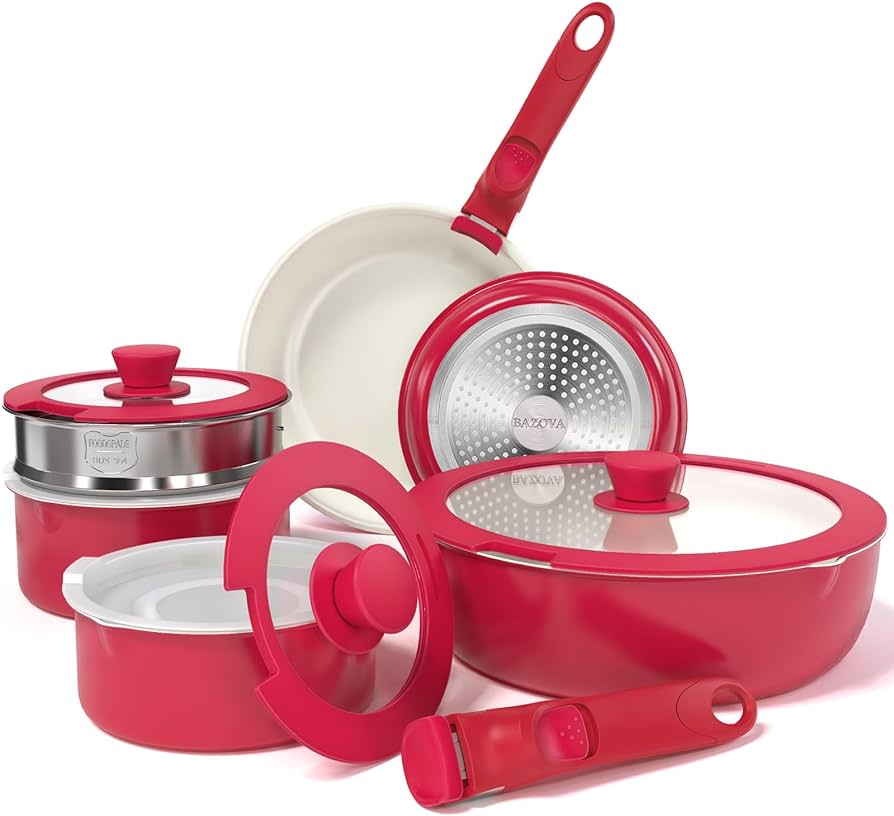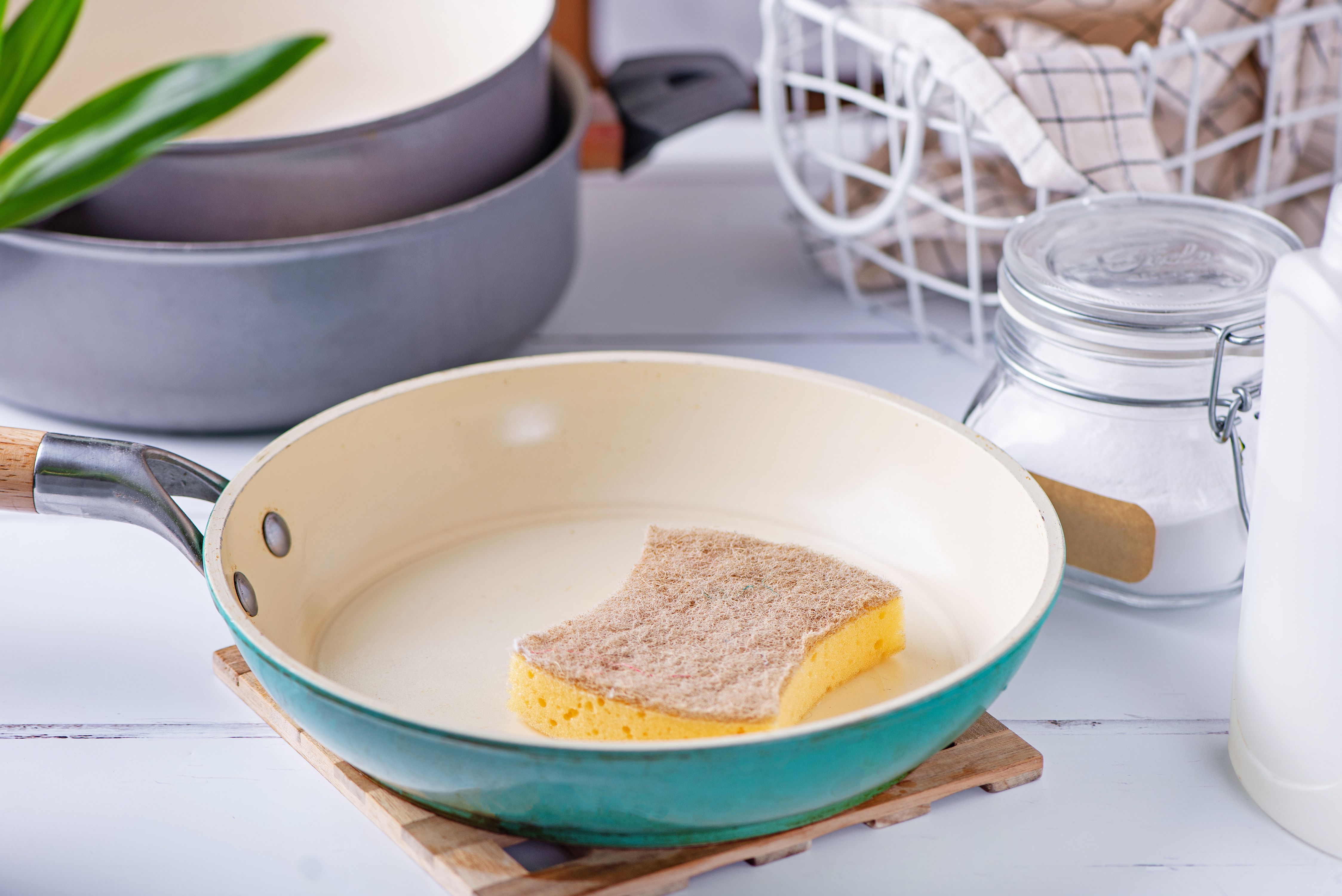
Introduction
Overview Of Ceramic Cookware And Its Popularity
Ceramic cookware is a favored choice among many home cooks due to its durability and non-toxic properties. It is made from clay and natural minerals, making it a safe option for cooking. Ceramic cookware is known for its ability to distribute heat evenly, which ensures consistent and thorough cooking. Its non-stick surface also makes it easy to clean.
Importance Of Understanding Cookware Compatibility With Oven Use
Using cookware in the oven requires careful consideration of its compatibility. It is essential to know the temperature limits and guidelines provided by the manufacturer to prevent any damage to the cookware. This knowledge ensures that the cookware will withstand the heat and perform optimally without compromising its quality.
Understanding Ceramic Cookware
Composition And Manufacturing Process Of Ceramic Cookware
Ceramic cookware is made from natural clay and minerals. The manufacturing process involves shaping the clay into the desired cookware shape, followed by baking it at high temperatures. This creates a durable and heat-resistant material that can withstand the rigors of cooking. The glaze applied to the cookware’s surface provides a non-stick property and enhances its aesthetic appeal.
Advantages And Disadvantages Of Using Ceramic Cookware
Advantages:– Non-toxic: Ceramic cookware is free from harmful chemicals such as PFOA and PTFE, making it a safe option for cooking.- Even heat distribution: The ceramic material allows for even heat distribution, preventing hot spots and ensuring that food cooks evenly.- Easy to clean: The non-stick surface of ceramic cookware makes it easy to clean, requiring minimal effort and reducing the need for excessive scrubbing.- Versatility: Ceramic cookware can be used on various heat sources, including gas, electric, and induction stovetops.
Disadvantages:
- Fragility: Ceramic cookware can be prone to chipping or cracking if mishandled or dropped. It is important to handle it with care to avoid any damage.
- Temperature limitations: While ceramic cookware is oven-safe, it has temperature limitations. It is crucial to follow the manufacturer’s guidelines to prevent any damage to the cookware.
- Degradation of non-stick properties: Over time and with improper care, the non-stick properties of ceramic cookware can diminish. It is important to use proper utensils and cleaning methods to prolong its non-stick capabilities.
In conclusion, understanding the composition and limitations of ceramic cookware is crucial for its safe and effective use in the oven. By following the manufacturer’s temperature guidelines and taking proper care of the cookware, you can enjoy the benefits of ceramic cookware in your cooking endeavors.
Oven Safety Of Ceramic Cookware
Exploring The Oven Safety Of Ceramic Cookware
Ceramic cookware is a popular choice for its non-toxic and versatile properties. One common question about ceramic cookware is whether it can be used in the oven. The answer is yes, ceramic cookware is oven safe due to its unique composition and manufacturing process.
Ceramic cookware is made from natural clay and minerals, which are shaped into the desired cookware form and fired in a kiln at high temperatures. This process creates a durable and heat-resistant material that can withstand the oven’s heat. However, it is essential to follow the manufacturer’s guidelines regarding temperature limitations to prevent any damage to the cookware.
Benefits Of Using Ceramic Cookware In The Oven
Using ceramic cookware in the oven offers several advantages:
- Even heat distribution: The ceramic material allows for even heat distribution, ensuring that your food cooks evenly and preventing hot spots.
- Non-toxic: Ceramic cookware is free from harmful chemicals like PFOA and PTFE, making it a safe option for cooking.
- Easy to clean: The non-stick surface of ceramic cookware makes it easy to clean, requiring minimal effort and reducing the need for excessive scrubbing.
- Versatility: Ceramic cookware can be used on various heat sources, including gas, electric, and induction stovetops, as well as in the oven.
Despite its many benefits, ceramic cookware does have some limitations. It can be fragile and prone to chipping or cracking if mishandled or dropped. It is important to handle it with care to avoid any damage. Additionally, over time and with improper care, the non-stick properties of ceramic cookware may degrade. Proper utensils and cleaning methods should be used to prolong its non-stick capabilities.
In conclusion, understanding the oven safety of ceramic cookware is crucial for its effective and safe use. By following the manufacturer’s guidelines regarding temperature limitations and taking proper care of the cookware, you can enjoy the benefits of using ceramic cookware in your oven cooking endeavors.
Factors To Consider
Temperature Limitations And Recommended Usage For Ceramic Cookware In The Oven
When using ceramic cookware in the oven, it is essential to understand the temperature limitations specified by the manufacturer. Different types of ceramic cookware may have varying temperature thresholds, so it is crucial to refer to the guidelines provided.
Some ceramic cookware can safely withstand high oven temperatures up to 500°F (260°C) or even higher. However, others may have lower temperature limits, typically around 350°F (175°C) to 450°F (232°C). Exceeding these temperature limits can lead to damage, such as cracking or warping of the cookware.
Furthermore, it is important to consider the recommended usage of ceramic cookware in the oven. While it can handle high heat, it may not be suitable for certain cooking techniques that involve extreme temperature changes, such as broiling or using under the broiler. Always refer to the manufacturer’s guidelines to ensure proper use.
Impact Of Oven Heat On Different Types Of Ceramic Cookware
It’s worth noting that there are various types of ceramic cookware available in the market, and their reaction to oven heat may differ.
Porcelain ceramic cookware is known for its excellent heat retention and even distribution. It can withstand high oven temperatures and is ideal for slow cooking, baking, or roasting.
Earthenware and stoneware ceramic cookware are also suitable for oven use but may have lower temperature limits compared to porcelain. They are perfect for baking casseroles, bread, or desserts.
On the other hand, some types of ceramic cookware, such as terra cotta or decorative ceramic dishes, may not be oven safe due to their decorative finishes or glazes. Always check the manufacturer’s instructions before using any ceramic cookware in the oven.
Lastly, it is important to be cautious when placing ceramic cookware directly from the oven onto a cold or wet surface. Sudden temperature changes can cause thermal shock, leading to cracks or breakage. Use heat-resistant trivets or mats to protect your countertops or table surfaces.
In conclusion, ceramic cookware can go in the oven as long as the temperature limitations and recommended usage guidelines are followed. Different types of ceramic cookware may have different temperature thresholds, so always refer to the manufacturer’s instructions. By understanding these factors and taking proper care, you can enjoy the versatility and benefits of using ceramic cookware for your oven cooking needs.

Important Considerations
Precautions To Take When Using Ceramic Cookware In The Oven
When using ceramic cookware in the oven, there are a few precautions to keep in mind to ensure the safety and longevity of your cookware:
- Always refer to the manufacturer’s guidelines for the recommended temperature limits and usage instructions.
- Avoid using ceramic cookware under the broiler or for broiling, as the extreme temperature changes can cause damage.
- Be cautious when placing hot ceramic cookware directly onto a cold or wet surface to prevent thermal shock.
- Use heat-resistant trivets or mats to protect your countertops or table surfaces from potential heat damage.
Maximizing The Lifespan Of Ceramic Cookware Through Proper Oven Use
To maximize the lifespan of your ceramic cookware when using it in the oven, follow these tips:
- Preheat the oven before placing your ceramic cookware inside to ensure even heat distribution.
- Avoid using excessive heat as it can lead to cracking or warping of the cookware.
- Allow the cookware to cool down before cleaning it to prevent thermal shock.
- Use non-abrasive cleaning methods, such as gentle scrubbing with a soft sponge or cloth, to avoid damaging the ceramic surface.
- Store your ceramic cookware properly to prevent scratches or chips, such as using protective padding between nested pieces.
By following these precautions and tips, you can safely and effectively use ceramic cookware in the oven while extending its lifespan. Always refer to the manufacturer’s guidelines for specific recommendations and limitations to ensure proper care and usage of your cookware.
Oven-safe Tests For Ceramic Cookware
Simple Methods To Check If Ceramic Cookware Is Oven-safe
If you’re not sure whether your ceramic cookware is oven-safe, you can perform a simple test to find out:
- Check the manufacturer’s label or packaging: Most oven-safe ceramic cookware will have a label or notation indicating its ability to withstand oven temperatures.
- Inspect the cookware for any metal components: Some ceramic cookware may have metal handles or knobs that can’t withstand high oven temperatures. If you see any metal parts, check if they are oven-safe as well.
- Look for specific temperature limitations: The manufacturer should specify the maximum oven temperature that the ceramic cookware can handle. Make sure your oven does not exceed this limit.
Reliable Indicators Of Quality Oven-safe Ceramic Cookware
When shopping for ceramic cookware, there are a few indicators that can help you identify if it is oven-safe and of good quality:
| Indicator | Description |
|---|---|
| Manufacturer’s reputation | Choose brands with a good reputation for producing high-quality cookware, as they are more likely to offer oven-safe options. |
| Material composition | Look for ceramic cookware with high-quality materials, such as porcelain or stoneware, as these are more likely to be oven-safe. |
| Thick and even construction | Cookware that is thick and has even construction is less likely to crack or warp when exposed to high oven temperatures. |
| Clear labeling | Choose cookware that clearly indicates its oven-safe status and provides information on temperature limits. |
While these indicators can generally help you identify oven-safe ceramic cookware, it is always important to refer to the manufacturer’s instructions and guidelines for specific details and limitations.
Alternative Cookware For Oven Use
Exploring Other Cookware Materials Suitable For Oven Usage
When it comes to using cookware in the oven, ceramic is not the only option. There are several other materials that are safe and practical for oven use:
- Glass: Glass cookware, such as Pyrex or borosilicate glass, is a popular choice for oven use. It is heat resistant and can withstand high temperatures without cracking or warping. Glass also provides even heat distribution, ensuring that your food cooks evenly.
- Stainless steel: Stainless steel cookware is known for its durability and versatility. Most stainless steel cookware can be used in the oven, but it is important to check the manufacturer’s guidelines to ensure that the specific product is oven-safe.
- Cast iron: Cast iron cookware is extremely durable and can handle high oven temperatures. It retains heat well and provides excellent heat distribution. However, it is important to season and properly maintain cast iron cookware to prevent rusting.
Comparing Ceramic Cookware With Alternatives In Terms Of Performance And Safety
When comparing ceramic cookware with alternative materials for oven use, there are a few factors to consider:
- Heat resistance: Ceramic cookware is known for its excellent heat retention and even heat distribution. Glass cookware offers similar advantages, while stainless steel and cast iron may take longer to heat up but retain heat well.
- Durability: Ceramic cookware is quite durable and can withstand high oven temperatures, but it may be more prone to chipping or cracking compared to materials like stainless steel or cast iron.
- Versatility: Ceramic cookware is versatile and can be used for various cooking methods, including baking, roasting, and broiling. Similarly, glass cookware is also versatile and can be used for a wide range of oven cooking.
- Ease of maintenance: Ceramic cookware is generally easy to clean and dishwasher safe. Stainless steel and cast iron cookware may require more maintenance to prevent rusting and maintain their seasoning.
In conclusion, while ceramic cookware is a popular choice for oven use, there are alternative materials like glass, stainless steel, and cast iron that are also suitable. Each material has its own advantages, so it’s important to consider your cooking preferences and needs when choosing cookware for oven use. Remember to always refer to the manufacturer’s guidelines for specific instructions and temperature limits to ensure the safety and longevity of your cookware.

Care And Maintenance
Proper Cleaning And Maintenance Tips For Ceramic Cookware Used In The Oven
To ensure the longevity and performance of your ceramic cookware when used in the oven, it is important to follow these cleaning and maintenance tips:
- Use mild dish soap and a soft sponge or cloth to clean your ceramic cookware. Avoid using abrasive cleaners or scrub brushes, as they may scratch the surface.
- Allow the cookware to cool down completely before cleaning. Placing hot ceramic cookware under cold water or immersing it in water while hot can cause thermal shock and lead to cracking or breaking.
- If there are stubborn stains or food residue, soak the cookware in warm water for a short period to help loosen them before cleaning.
- Avoid using metal utensils or tools that can scratch the ceramic surface. Instead, use wooden or silicone spatulas and utensils to protect the coating.
- Store your ceramic cookware properly to prevent any accidental damage. Stack them carefully, with a protective layer, such as a soft cloth or paper towel, between each piece to avoid scratching or chipping.
Avoiding Common Mistakes That May Damage Ceramic Cookware In The Oven
To prevent any damage to your ceramic cookware when using it in the oven, it is essential to avoid these common mistakes:
- Do not place cold or frozen ceramic cookware directly in a preheated oven. Allow the cookware to gradually reach room temperature before placing it in the oven to avoid thermal shock.
- Avoid drastic temperature changes. Do not take hot ceramic cookware out of the oven and place it directly on a cold surface, such as a countertop or sink. Use trivets or pot holders to protect both the cookware and the surface it rests on.
- Do not use ceramic cookware on stovetops or open flames, as they are designed for oven use only.
- Do not use the broiler setting on your oven with ceramic cookware unless it is explicitly marked as broiler safe. The intense heat from the broiler can cause the cookware to crack or break.
- Avoid using harsh chemicals, abrasive cleaners, or scouring pads on ceramic cookware, as they can damage the coating and reduce its non-stick properties.
By following these care and maintenance tips and avoiding common mistakes, you can ensure the durability and longevity of your ceramic cookware when used in the oven.
Care And Maintenance
Proper Cleaning And Maintenance Tips For Ceramic Cookware Used In The Oven
To ensure the longevity and performance of ceramic cookware when used in the oven, it is important to follow these cleaning and maintenance tips:- Use mild dish soap and a soft sponge or cloth to clean ceramic cookware. Avoid using abrasive cleaners or scrub brushes, as they may scratch the surface.- Allow the cookware to cool down completely before cleaning. Placing hot ceramic cookware under cold water or immersing it in water while hot can cause thermal shock and lead to cracking or breaking.- If there are stubborn stains or food residue, soak the cookware in warm water for a short period to help loosen them before cleaning.- Avoid using metal utensils or tools that can scratch the ceramic surface. Instead, use wooden or silicone spatulas and utensils to protect the coating.- Store ceramic cookware properly to prevent any accidental damage. Stack them carefully, with a protective layer, such as a soft cloth or paper towel, between each piece to avoid scratching or chipping.
Avoiding Common Mistakes That May Damage Ceramic Cookware In The Oven
To prevent any damage to ceramic cookware when using it in the oven, it is essential to avoid these common mistakes:- Do not place cold or frozen ceramic cookware directly in a preheated oven. Allow the cookware to gradually reach room temperature before placing it in the oven to avoid thermal shock.- Avoid drastic temperature changes. Do not take hot ceramic cookware out of the oven and place it directly on a cold surface, such as a countertop or sink. Use trivets or pot holders to protect both the cookware and the surface it rests on.- Do not use ceramic cookware on stovetops or open flames, as they are designed for oven use only.- Do not use the broiler setting on your oven with ceramic cookware unless it is explicitly marked as broiler safe. The intense heat from the broiler can cause the cookware to crack or break.- Avoid using harsh chemicals, abrasive cleaners, or scouring pads on ceramic cookware, as they can damage the coating and reduce its non-stick properties.
By following these care and maintenance tips and avoiding common mistakes, users can ensure the durability and longevity of their ceramic cookware when used in the oven.
Conclusion
Final Thoughts On Ceramic Cookware’s Compatibility With Ovens
After considering the care and maintenance tips as well as the common mistakes to avoid, it is evident that ceramic cookware can be a great option for oven use, given that it is labeled as oven-safe. By following the manufacturer’s guidelines, checking specific temperature limits, and adhering to recommended care instructions, users can confidently use ceramic cookware in their ovens without concerns of damage or safety risks.
Summary Of Key Points Discussed In The Article
- Ceramic cookware can be used in the oven if labeled as oven-safe.- It is important to refer to the manufacturer’s guidelines and follow recommended temperature limits and care instructions.- Proper cleaning and maintenance techniques include using mild dish soap, avoiding abrasive cleaners, allowing the cookware to cool before cleaning, using wooden or silicone utensils, and storing the cookware with protective layers.- Common mistakes to avoid include placing cold or frozen cookware in a preheated oven, avoiding drastic temperature changes, not using ceramic cookware on stovetops or open flames, not using the broiler setting unless marked as broiler safe, and avoiding harsh chemicals or scouring pads.- By following these tips and guidelines, users can ensure the durability and longevity of their ceramic cookware when used in the oven.
FAQ: Can Ceramic Go in the Oven? Cookware Compatibility Consideration
Q: Can ceramic cookware be used in the oven?
A: Yes, ceramic cookware is generally safe to use in the oven. However, there are a few factors to consider before placing it in the oven.
Q: What types of ceramic can go in the oven?
A: Most ceramic cookware, such as ceramic baking dishes, casseroles, and oven-safe ceramic bowls, can go in the oven. It is important to check the manufacturer’s instructions or labels to ensure compatibility.
Q: What temperature can ceramic withstand in the oven?
A: Ceramic cookware is typically designed to withstand high oven temperatures. While levels may vary, many ceramic cookware can handle temperatures up to 500 degrees Fahrenheit (260 degrees Celsius).
Q: Are all ceramics oven-safe?
A: Not all ceramic products are oven-safe. Regular ceramic dishware, such as decorative plates or delicate china, may not be suitable for oven use. Always check the product labeling or contact the manufacturer to confirm if a specific ceramic item is oven-safe.
Q: How can I tell if my ceramic cookware is oven-safe?
A: Look for labels or markings on the cookware indicating that it is oven-safe. Additionally, most oven-safe ceramic cookware will state the maximum temperature it can withstand.
Q: Can I use ceramic cookware under the broiler?
A: Some ceramic cookware can be used under the broiler, but not all. It’s essential to check specific instructions from the manufacturer to ensure broiler compatibility.
Q: Is it safe to transfer ceramic cookware from the refrigerator directly to the oven?
A: Generally, it is not recommended to transfer ceramic cookware directly from the refrigerator to the oven, as sudden temperature changes can cause thermal shock and potentially damage the cookware. Allow the cookware to come to room temperature before placing it in the oven.
Q: Can I use ceramic cookware on the stovetop?
A: Most ceramic cookware is not suitable for stovetop use, as it can crack or shatter due to direct heat contact. Ceramic cookware is primarily designed for oven use.
Q: Is ceramic cookware easy to clean?
A: Yes, ceramic cookware is generally easy to clean. Most ceramic pans and dishes have a non-stick surface, making them convenient for washing by hand or in the dishwasher. However, it’s always a good idea to check the manufacturer’s instructions for specific cleaning recommendations.
In summary, many ceramic cookware products are oven-safe and can handle high temperatures. However, it is important to read the manufacturer’s guidelines and labels to ensure compatibility, as not all ceramics are suitable for use in the oven or under the broiler. Avoid sudden temperature changes and always allow the cookware to come to room temperature before placing it in the oven.

We are family-owned and operated. We love to serve coffee to our community that loves to drink it! We opened in December 2017 and are always expanding and evolving. We strive to offer a relaxing and comfortable gathering place for our customers. We not only serve delicious coffee but a full breakfast and lunch menu as well. You can also order ONLINE through our website or call ahead and pick it up right at our drive-thru window! We have a wide range of delicious baked goods, sweet treats, and a gift shop coming soon! Stop in and let us serve you!!